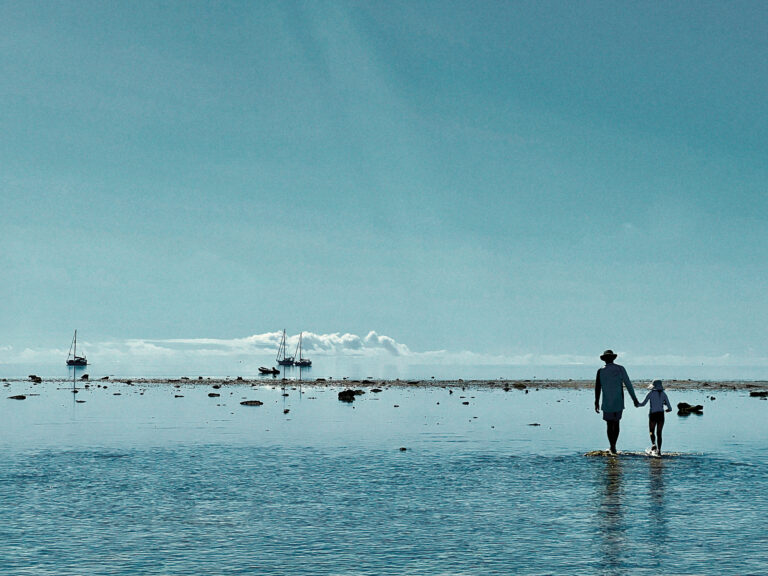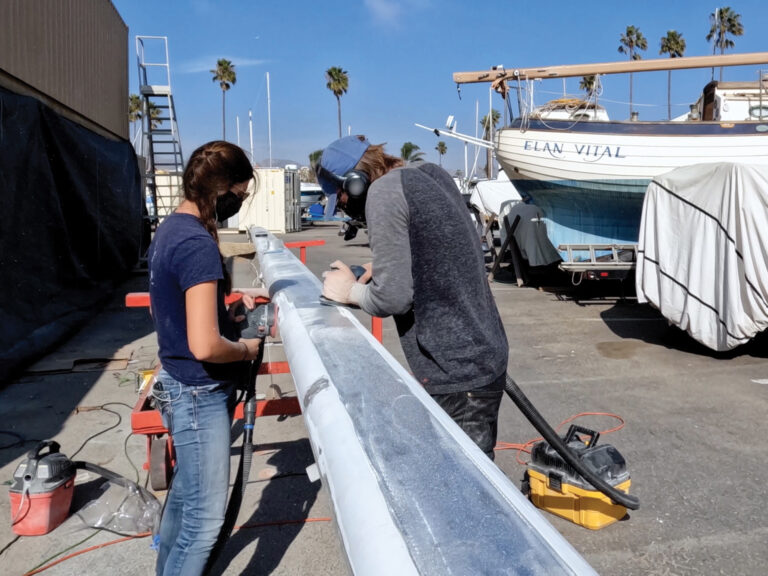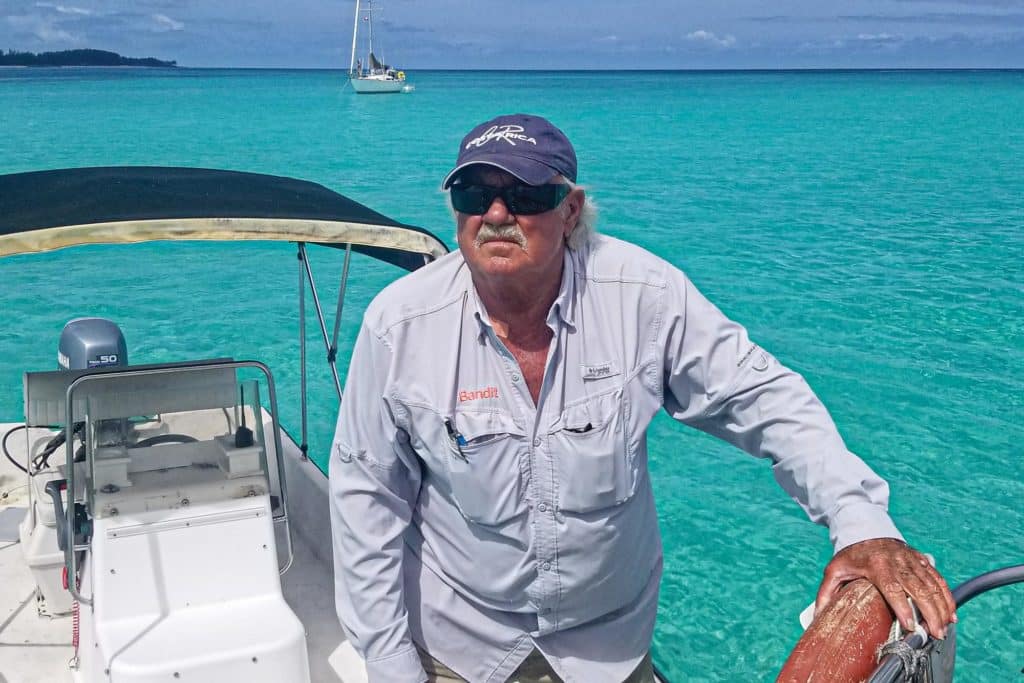
It’s called Devil’s Backbone for a reason: It’s a dangerous stretch of rock, coral and shifting sand shoals along Eleuthera’s north shore. Winding through this spine lies the passage from Spanish Wells to Harbour Island. By most counts, a local pilot is required.
I began hearing about the Backbone while in the Abacos on my Tartan 34, Jade. A handful of boats was piled in Little Harbour, staging for crossing the Northeast Providence Channel to Eleuthera. Folks at Pete’s Pub in Little Harbour hunched over beers and cocktails and talked about the Backbone’s danger and beauty, and even the more-seasoned sailors told me to hire a pilot boat and make the run.
A few days later I was in Spanish Wells, known as the hub of commercial fishing in the Bahamas. The harbor is basically a canal or mangrove river that you enter from the south through a gap in a coral wall. Rows of fishing boats lie tied to the docks that line the north side of the harbor, and the main street runs along those docks.
A friend had flown into the Eleuthera airport to sail for 10 days, and we splurged on a mooring and paddled my little Soar inflatable canoe across the harbor to explore the town. The main drag follows a traditional working waterfront. There aren’t palm trees and beaches; it reminded me of Maine—commercial fishing boats, a large shipyard, old men sitting in the shade talking, kids with fishing poles, and barges, ferries and commerce all focused on the water.
A man in a golf cart quickly stopped and asked where we were going, and soon we were in his cart for an impromptu tour of the island. He’d been a fisherman and pilot there his entire life, but now, in his 80s, he was retired. He honked and yelled at friends, showed us the town and his house, and pointed out recent changes to the landscape. The ride took over an hour, and by the end of it, I asked him about the Devil’s Backbone.
“Do we really need a pilot?”
He became animated, nearly offended. “You need a pilot,” he said. “Definitely. I’ll find you one.” He took out his cellphone and made a call. No answer. “Call me in the morning,” he said and gave us his number. “My name is A-1. I’ll get you a deal on a pilot. Call me. A-1.”
I was a bit hesitant. I’d already asked the guy we’d rented the mooring from about the trip. His name was Bandit, and he was a pilot too. But the price was high enough that I’d been considering taking my chances with the Backbone without a guide, but if A-1 could get us a deal, that seemed worthwhile.
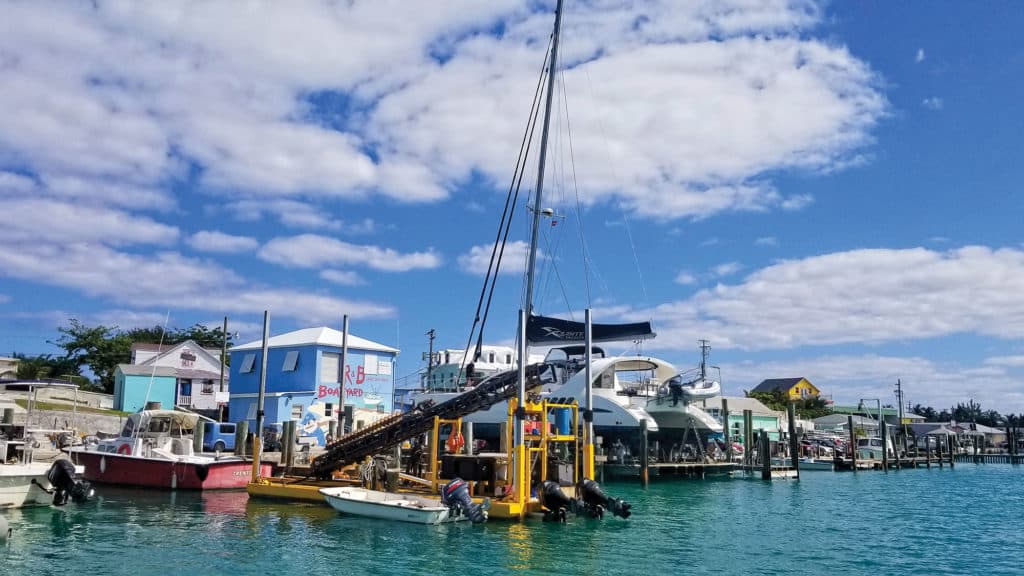
Back at the boat, I deliberated. I examined the chart and searched the internet for information but found nothing beyond warnings. One cruiser’s blog said they’d used their AIS to track transiting boats, and then painstakingly plotted the coordinates to use as waypoints for a track. Even with those, they said, they were on high alert.
We returned to shore for dinner. Another local in a golf cart picked us up. He said he’d been a bargeman for decades and had done the run across the Backbone thousands of times. “Get a pilot, mon,” he said. “You never done it before; get a pilot.”
In the morning, we rendezvoused with the crew on a boat named Tyee who I’d met back in North Carolina. They were a young Russian couple from Boston with a 2-year-old. We decided to be sensible. We’d split the cost of a pilot. I called A-1 to see what he had.
When he answered, he wasn’t the kind octogenarian he’d been. He was hard business, angry. “You already talked to Bandit. You go with Bandit.” And he hung up.
Read More: from Jon Keller
So we went with Bandit. I was a bit confused about the switch in A-1′s personality, but quickly concluded that the pilots are an organized group that sets a price and sticks to it.
Bandit was similarly unhappy with us, but he told us to follow him. There were three boats going through, and he’d be aboard the lead boat. Our share for his services came to $75.
The day was flat-calm and sunny, and we exited the harbor single file and rounded the rocky tip of Eleuthera. The run was beautiful, though on a day with any winds out of the north, it would be impassable. Reef to the north, beach and surf to the south, and our three boats snaked through it all. Other boats were out there, all with pilots—the guides’ small skiffs with outboards trailing behind the yachts they were aboard.
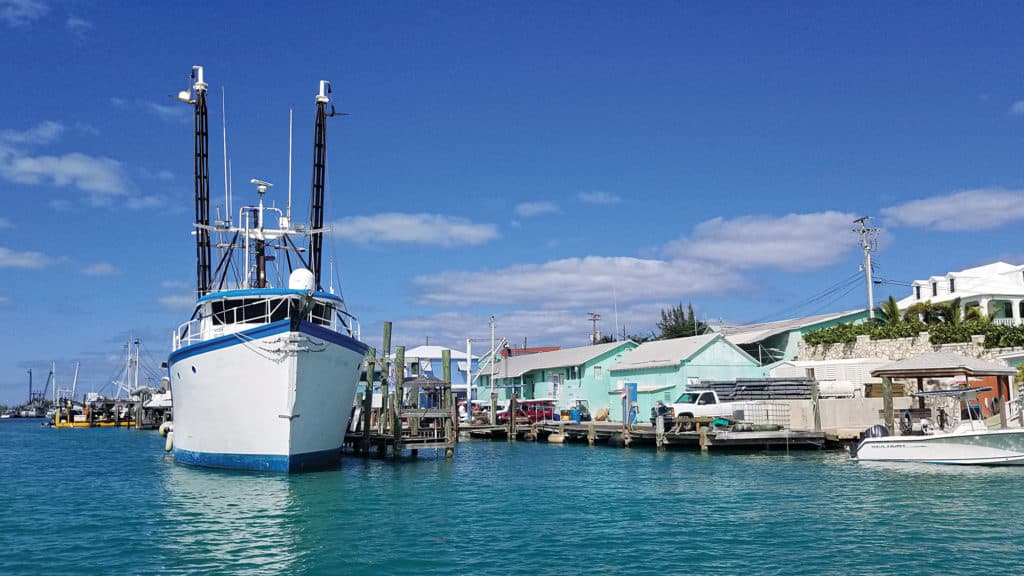
Coral heads passed by, dark shapes looming in the water as we zigzagged toward the beach, then cut back out. A few miles later, we were through it all, with Current Point off the starboard bow. From there, it was a clear shot to Ramora Bay and Harbour Island.
We anchored beside Tyee and snorkeled the outside reef. Bandit continued with the third boat to Harbour Island. We talked with Tyee’s crew about the Backbone, and agreed that the entire thing was blown way out of proportion—on a decent day, a competent cruiser who’d navigated reefs could make the run. We’d barely veered from the rhumb line on our chart plotters. But there’s also an interesting cultural aspect to the pilots—a cruiser has a local aboard their boat, and they get to hear their stories and pick their brains for local knowledge.
We anchored that night in a surprisingly popular anchorage off Man Island, then headed to Harbour Island the following day. Then a band of bad weather hit and kept us stormbound in Ramora Bay, the Devil’s Backbone unnavigable to any boat.
A week later, we left without a pilot. The water was still upset, sloshing with leftover storm slop, and we could see some residual swell breaking over the outer reef. We made the passage easily enough without ol’ Bandit, but we did see two cruising boats bound for Harbour Island that were aground on an uncharted sand shoal. They were on the radio, calling for a pilot boat, and Bandit was on his way.
After a voyage south, Jon Keller is back writing from his home in Maine.






